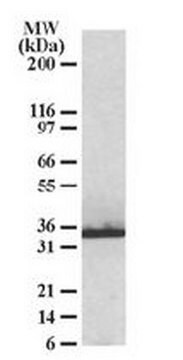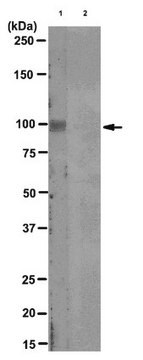MABN1783
Anti-HLA Class I Antigens Antibody, clone W6/32
clone W6/32, from mouse
Sinonimo/i:
HLA class I histocompatibility antigen, A alpha chain, MHC class I antigen A, HLA class I histocompatibility antigen, B alpha chain, MHC class I antigen B, HLA class I histocompatibility antigen, C alpha chain, MHC class I antigen C;HLA class I histocomp
About This Item
Prodotti consigliati
Origine biologica
mouse
Livello qualitativo
Forma dell’anticorpo
purified antibody
Tipo di anticorpo
primary antibodies
Clone
W6/32, monoclonal
Reattività contro le specie
human
tecniche
affinity binding assay: suitable
affinity chromatography: suitable
flow cytometry: suitable
immunohistochemistry: suitable
immunoprecipitation (IP): suitable
neutralization: suitable
Isotipo
IgG2a
N° accesso Genebanck
N° accesso NCBI
Condizioni di spedizione
ambient
modifica post-traduzionali bersaglio
unmodified
Informazioni sul gene
human ... HLA-A(3105) , HLA-C(3107) , HLA-E(3133)
Descrizione generale
The previously assigned protein identifier P30443 has been merged into P04439. Full details can be found on the UniProt database.
Specificità
Immunogeno
Applicazioni
Qualità
Immunohistochemistry Analysis: A 1:1,000 dilutioin of this antibody detected HLA class I antigens in acetone-fixed frozen human tonsil tissue sections.
Descrizione del bersaglio
Stato fisico
Altre note
Note legali
Non trovi il prodotto giusto?
Prova il nostro Motore di ricerca dei prodotti.
Codice della classe di stoccaggio
12 - Non Combustible Liquids
Classe di pericolosità dell'acqua (WGK)
WGK 2
Punto d’infiammabilità (°F)
Not applicable
Punto d’infiammabilità (°C)
Not applicable
Certificati d'analisi (COA)
Cerca il Certificati d'analisi (COA) digitando il numero di lotto/batch corrispondente. I numeri di lotto o di batch sono stampati sull'etichetta dei prodotti dopo la parola ‘Lotto’ o ‘Batch’.
Possiedi già questo prodotto?
I documenti relativi ai prodotti acquistati recentemente sono disponibili nell’Archivio dei documenti.
Il team dei nostri ricercatori vanta grande esperienza in tutte le aree della ricerca quali Life Science, scienza dei materiali, sintesi chimica, cromatografia, discipline analitiche, ecc..
Contatta l'Assistenza Tecnica.







